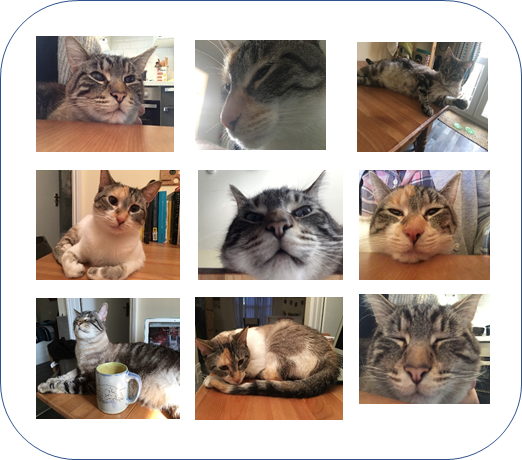Kristen Schuster is Lecturer in Digital Curation for the Department of Digital Humanities at King’s College London
I lecture in digital curation and exploring the relationship between curation and preservation is one of my favorite topics of discussion. I find these discussions so interesting because as a librarian I often find that, on the surface, I have a different understanding of preservation than my students. And, as a result, my examples based in museums and archives are initially at odds with their work experiences and career goals -- many of my students want to work in news broadcast agencies. The idea of long-term preservation making media accessible and usable for decades often alludes them… the news moves forward, not backwards after all! I was quite intrigued by the disconnect between my well-intentioned explanation that we create content – analog or digital – because we want to use and re-use it, and that use, and re-use help us establish narratives and understandings of events, people, places and objects. My efforts to explain file types, compression ratios and the joys of file structures fell flat and, looking back, this shouldn’t have surprised me. After all, connecting the importance of file compression to the activities (cough curation) preservation support is elusive when put in abstract terms. So now, instead of pursuing a degree in broadcast journalism to try and relate to my students’ interests, I discuss how preservation can save us the time, effort and the frustration of having to re-create valuable assets or regret the loss of content. Instead of directly discussing file types and file structures, I enthusiastically convince students that metadata and practical methods for organizing content makes it possible for everyone to participate in the curation and preservation activities.
I’ve been told I have Trans-Atlantic enthusiasm and that it really doesn’t help make people love metadata. I have chosen to ignore this and continue telling my students that ‘I’ve never met-a-data’ I didn’t like, and if they are feeling generous one or two of them laugh… most just look confused and awkward. In between the long pause and gradual understanding of just how bad my joke is, I introduce concepts of data standards and types of metadata (in all honesty this long pause is really an hour long lecture). Initially I was convinced students would love metadata for the sake of metadata… that lines of xml would somehow draw them into the universe of knowledge organization and, by proxy, digital curation. While I am correct in my assumption that students are intrigued and fascinated by organizational systems, I have realized that lines of xml are not the best way to persuade them that they have the ability and skills to organize and curate content and, as a result, develop preservation plans. It’s not that students aren’t intrigued, willing and able to learn xml, they simply need a reason, and this reason needs to connect back to their interests: Media. So, I use rather silly, but still compelling examples: A photo albumsof my cats (I am, after all, a librarian).

Generally, my ask why I chose certain pictures of my cats. I’m more than happy to avoid answering directly by discussing challenges with file storage, tools like a CMS. Through these discussions it’s also possible to guide students to start asking how I organized these photos and replicated these practices for all my photos.
Now for the connection between curation and preservation. As I slowly convince students that making decisions about what to curate and how to curate it, I ask two questions: how do you know what media you have and how can we make decisions about which media to keep (or get rid of)? Discussing these questions helps students link the process of organizing digital media to curation activities and introduces a rather nebulous concept: value. Asking students to discuss and formulate an opinion about value is an opportunity to help them transfer what they know about made up (rather inconsequential) collections, to the curation and preservation of footage produced by broadcast news agencies. Tackling the issue of value through discussions about organizational strategies and linking these strategies to the concept of curation presents preservation as an ongoing process. This is to say: metadata provides a kind of bridge between curation and preservation, but only if we understand why, how and for what purpose describing media (or any digital object for that matter) is worthwhile. As this slowly sinks in, it becomes easier for my students to transfer the concept of tags and sub-tags into more technical terminology (data structure standards, elements, attributes etc. …). I will conclude by boasting that my students are able to discuss digital preservation as a strategy that involves technical and social practices… and they only use photos of my cats to prove their points when they’re feeling cheeky.
